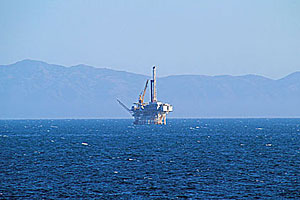
|
Most energy analysts have been surprised by the recent price climb of West Texas Intermediate crude oil to more than $100 per barrel. Since U.S. demand, which reflects the domestically extracted “light crude,” traditionally generates its lowest prices in the winter months, historically annual prices dropped accordingly in 2013, during which prices averaged from the low to middle $90s.
The 2013-2014 winter season was expected to be no exception, even though the pre-recession 20 million barrels per day output had plummeted to near 17.5 million BPD during the recession; and only recently had seen its demand again approach 19 million.
Although the highest prices for light sweet crude had surged just before the financial crash to $145 per barrel in July 2008 and plummeted to less than $50 BPD in the depth of the financial recession, the current consumer demand comeback would not seem to be the progenitor of WTI pricing of more than $100. This would seem especially so as an unusually severe winter restricted the already seasonal cutback in travel, the main utilizer of oil derivatives, especially gasoline, diesel and jet fuel for flying.
Among the variety of explanations to see West Texas Intermediate oil literally go “upwind against the grain,” is that the 140 U.S. refineries (the most prolific in the world) have greatly expanded their capacities onsite (estimated at 20% or more since the 1990s). What is not well known is that despite seeming U.S. government indifference toward a national infrastructure expansion for oil, natural gas, as well as utility-driven electric power, private major pipeline giants such as Enbridge, Kinder Morgan, Valero and National Oilwell, have made an effort to expand major pipeline activity from the network of 50 years ago. This led to a restructuring to take advantage of the massive shale development, such as the Dakota Bakken Belt, the Mid-Atlantic Marcellus Shale and the Texas-based Permian Basin, among others.
The currently unprecedented fracking activity has only opened less than 10% of the oil and natural gas shale development waiting to be tapped. The oft-mentioned California Monterey Shale, by far the largest in the United States, is awaiting the approval of the California’s Sacramento-based progressive state legislature and that of Gov. Jerry Brown. Although the latter has privately stated approval based on an extremely favorable analysis conducted by the University of Southern California regarding tens of thousands of construction jobs and $75 billion or more in additional energy-related five-year revenues, it’s questionable as to whether he can override climatological purist hostility.
Even worse, he must contend with the strident California Air Resources Board and its populist ally, the Sierra Club. The current shale fracking activity growth is on the verge of accomplishing two major oil-volume acceleration initiatives:
- Due to the continued geopolitical turbulence, especially in OPEC countries depended upon to supply growing global demand, U.S. crude oil inventories hit a 23-month low in January and are still down 4% from a year ago. While the U.S. Energy Information Agency projects an average price of $93 a barrel in 2014, the flow out of the gigantic Cushing, Okla., bottleneck is slowly being mitigated by the leading pipeline companies. The best example is the reversal of the Cushing-Louisiana to refineries, which have reversed flow from the Gulf of Mexico coast to Cushing into pipeline shipments from the Oklahoma overload to the coast and greater Louisiana refineries.
- The big question mark developing this spring is the length and intensity of upgrades and enlargements to oil refineries, and the ultimate derivative evolution by U.S. refineries for export shipment to Mexico, Central and South America, as well as other global targets.
Whether or not the Obama administration allows crude oil shipments overseas also will depend on the rapidity of shale discovery and extraction, as well as the politics of the November 2014 midterm elections.
Will productivity be victimized?
With unemployment in danger of expanding during 2014 due to so-called structural productivity requiring fewer workers than the “hands-on” requirements predating the outburst of technologies such as computerization, the post-recession employment picture is bleak. Under these circumstances, it was reasonable to expect that productivity would accelerate to new levels, as costs per unit produced were dramatically reduced.
But to the dismay of productivity analysts, just the opposite has happened. Since the end of the Great Recession in 2009, the average annual productivity rate of 2.5 reached from 1948 to 2007 has done a nosedive to less than half that amassed since 2009. If such a slowdown continues, America’s production future will resemble that of the late 1980s for the next 15 years.
The reasons for such failure are obvious:
- Pre-occupation with a mangled health-care approach that seems to be getting more onerous almost daily as the implementation phase can’t even get off the ground.
- The enlargement of government agencies by the thousands who produce no additional revenues or value added per unit. In fact, the only major policy passed by the current White House power structure is the Dodd-Frank incubus that has burdened the small businesses of this country with paperwork restrictions and unproductive costs that seem even worse in application than they did in their original intent.
- A trillion-dollar legislative bill to get the nation’s post recession business and industry structure moving again. Instead of generating badly needed infrastructure for electricity and oil/gas, this money was wasted on the fantasy of climatological purity by promising taxpayer subsidies to wind, ethanol, uncompetitive solar-panel production and forcing the bankruptcy of coal.
These points are literally a “declaration of war” on independent businesses, which are trimming their workforces or turning them into part-time labor without benefits. Worst of all, nothing is being done to train a more sophisticated labor force. Never before has the richest nation on earth attempted to reverse success into failure.
Vastly overstated oil reserves
For decades, Saudi Arabia has been the focal point of global oil pricing stability; not only because of its pivotal leadership of the Organization of the Petroleum Exporting Countries for more than 40 years, but also the world’s reliance on Riyadh as the swing factor at times of oil shortages. The Saudis could always be relied on to raise their production levels from nine million BPD to as much as 12 million BPD when spasmodic Middle East availability caught the world short, threatening out-of-control price crises.
It was the Saudis who led the embargo against the West in 1973 to punish first-world nations, including the United States, for supporting Israel in the “Yom Kippur War.” Those antics, in which Iran also participated, brought oil prices up from $2 to $10 a barrel in 90 days, and panicked the United States, whose oil production was shrinking. On the other hand, Saudi Arabia filled the gap when Iran was sanctioned a few years ago and civil strife in the Mideast threatened new shortages. Although the Saudis again filled the gap at that time, increasing doubt is being cast on Saudi Arabia’s current reserves.
Although Russia is capable of matching Saudi Arabia’s pumping capacity, one-third of its “crude” is utilized for domestic purposes. Also, Putin & Co.’s geopolitical objectives are increasingly at odds with the West. They are not interested in pulling the developing world’s “chestnuts from the fire” at a time of geopolitical strife.
Despite the United States’ embryonic “fracking” success and Canada’s oil sands surge, the Saudis’ report of 268 billion reserve barrels of Brent crude is now being questioned. The last time Saudi oil was under independent audit in the 1970s, it was estimated at less than 120 billion barrels. Between 1980 and 1990, the Saudis claimed more than 160 billion in reserves.
Since then, the Saudis have claimed a jump to the current 268 billion barrels, while heavily pumping five major 40- to 67-year-old oil fields. In a recent attempt to bring worldwide heavy Brent crude down to $100 a barrel in the last two years, their output has declined 19% and failed to dent the continued global pricing of $105-$110 per barrel. While 78 billion barrels of oil have been pumped by the Saudis since 1987, and no major new finds initiated, it’s estimated that Saudi oil reserves are overstated by as much as 40%.
That opens the question as to whether the once mighty OPEC oil dominator will be falling far short; especially at a time when the developing world and the global recovering economic powers are depending on what increasingly looks like a vastly overstated reserve hoax.
While Southeast Asian oil demand is soaring, and with China now growing from 8.2 million barrels in 2010 to a current 10.2 million BPD, Beijing is on track to sell 20.3 million autos this year. Expectations are that China will need 11 million BPD by 2015. If these respective supply/demand inversions become manifest, it’s highly likely that both oil prices and their derivatives, as well as the American fracking revolution will be their upcoming beneficiaries.




